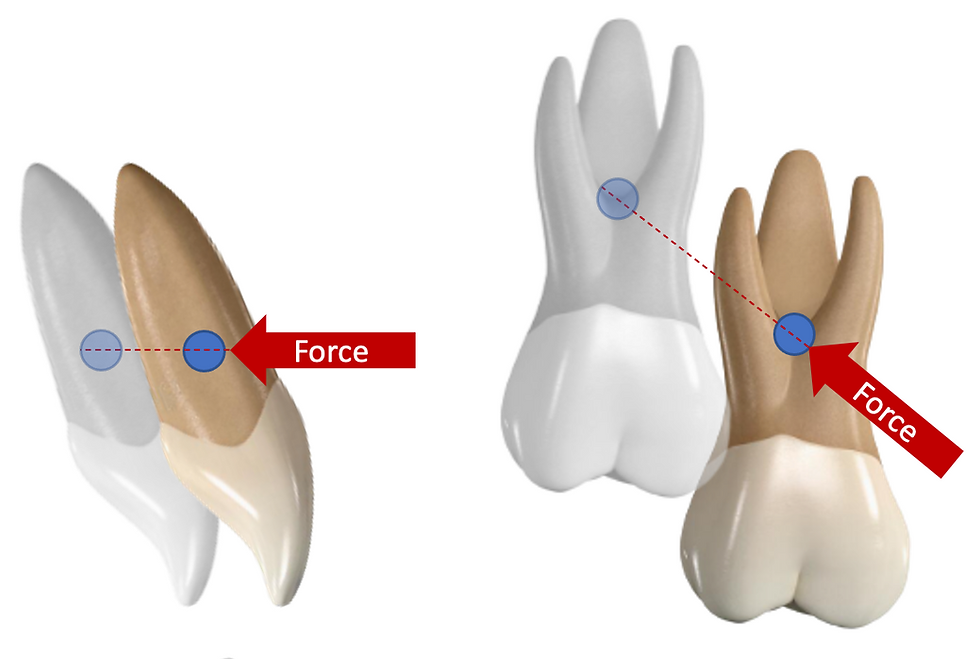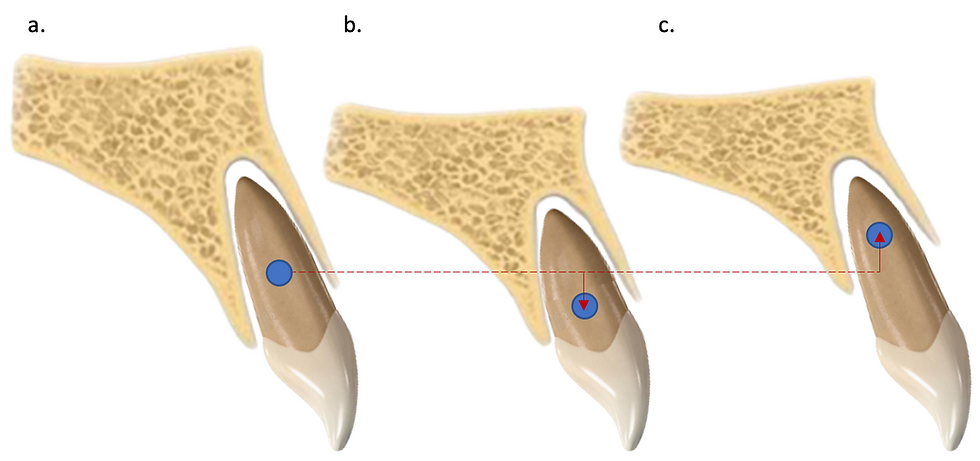Biomechanics in orthodontics obeys several fundamental laws, amalgamating physics and biology. This article on Centre of Resistance is the second in a series of five articles covering the fundamentals of biomechanics in orthodontics. It will enable you to better understand the physics and biological responses governing tooth movement.
Understanding the principles of biomechanics in orthodontics is essential to controlling the outcome of tooth treatment, and confidently managing your patients’ cases. While it is possible for a dentist beginning in the field of orthodontics to lean on a technician’s skill to develop a clear aligner treatment plan for basic cases, as a professional is important to understanding how to control orthodontic outcomes and to lead the development of treatment planning, particularly when attempting to correct complex malocclusions such a cross bite. For more on the complexity of treating cross bites, read this article.
Each article in this series covers the following key principles for biomechanics:
The orthodontic force
Centre of resistance
Moments of force and couples
Equivalent forces
Centre of rotation
Centre of Resistance
The Centre of Resistance (CR) of a tooth is the region within the tooth where a rotation wants to occur when a force is applied, and upon which perfect parallel movement, called translation, occurs when a force is applied directly to it.

Note that the CR is not a single point, rather a broader region, which is why it is denoted as a larger circle in diagrams.
In general, the CR is located 10mm from the centre of the clinical crown vestibular. Specifically, for monoradicular teeth the CR is located between the cervical and middle thirds of the distance marginal ridge and apex, and on multiradicular teeth the CR is commonly found in the apical part of the bifurcation or trifurcation of the roots.

Root structures and supporting tissues affect the location of the CR. For teeth where the root anatomy is (a.) normal and there is adequate bone support, the above description is generally accurate. However, for teeth with (b.) root resorption the CR is significantly lower. And for teeth with a (c.) periodontally reduced dentition resulting in poor supporting tissues, such as alveolar bone loss, the CR moves closer to the apex.

Group CR
Teeth being moved as a group together have a group CR. The group’s behaviour can be engineered into a clear aligner treatment plan so the selected teeth move as a single unit. For example, if the front four are prescribed to moved together, the group’s behaviour can be estimated as a single unit with the CR located between the roots of the incisors. Alternatively, if the entire arch is being expanded the CR is located between the roots of the premolars.
Direction of Movement
Resistance to movement is affected by the shape of teeth relative to the vector of the force applied. The direction of a tooth’s taper provides greater resistance to movement in certain directions. This means that the three-dimensional shape of a tooth affects dental treatment planning because the CR varies depending on the direction of movement required of that tooth. For example, consider the mandibular incisor. A movement in the buccolingual direction vs the mesio-distal direction moves the CR occlusally because the root’s taper in the mesio-distal direction creates greater resistance to buccal-lingual movement vs distal movement.

The mandibular right central incisor, viewed from a labial (L) and mesial (R) aspect, demonstrates a significantly different profile which effects the resistance to movement and therefore the relative location of the CR.
Summary
Treatment with clear aligners can make the consideration of CR simpler as the point of application of force can be dynamic given clear aligners wrap the entire tooth and forces applied by aligners can be simply changed with each change of aligners. This means individual tooth behaviours are controlled at each step of the treatment with potential greater predictability and reduced treatment times than traditional braces which require the entire arch be joined by a rigid wire and limits the location of the point of application of force.
Dental professionals interested in gaining a greater understanding of orthodontics and clear aligners are encouraged to look out for a Proligner Introduction to Clear Aligners Course near you or join the course online via live streaming: Education.
Look out for our next article in the Biomechanics in Orthodontics series covering Moment of Force.
Comments